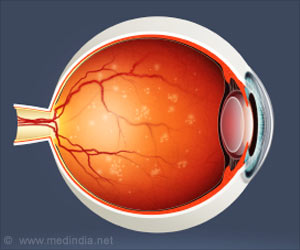
A low-invasive miniature needle electrode with a diameter of 4 µm enabled stable electrophysiological recording of diabetic mice brains. This technique is advantageous over conventional methods due to minimized brain tissue injury, and prevention of complications like cerebrovascular disease. It also holds potential in Brain-machine interface (BMI) technology to assist diabetic patients who have lost limbs, enabling them to control prosthetic limbs through brain signals.
This research was led by a team from the Institute for Research on Next-generation Semiconductor and Sensing Science (IRES) at the Toyohashi University of Technology, National Institute of Technology, Ibaraki College, and TechnoPro R&D Company (1✔ ✔Trusted Source
Low-invasive neural recording in mouse models with diabetes via an ultrasmall needle-electrode
).
Insights on Minimally Invasive Electrophysiological Recording
Diabetes is known to cause various complications, including the development of cerebrovascular disease, which is closely linked to Alzheimer’s disease due to its contribution to neuronal reduction.
Advertisement
In the study of brain diseases, quantitative analysis through the recording of neuronal activities with microelectrode holds great potential. However, recording from diabetic brains is expected to be more challenging than normal brains due to the complications associated with electrode penetration. The research team has successfully addressed this challenge by developing a low-invasive recording technology.
“Our technique successfully recorded neuronal activity in diabetic mice while minimizing tissue responses. These findings suggest that our electrode can be applied to various damaged brain tissues, not only diabetes but also other diseases,” explains the first authors of the article, master student Rioki Sanda and Ph.D. Koji Yamashita.
Professor Takeshi Kawano, leader of the research team, explains the motivation behind their project: “Diabetes is a complex disease known to cause various complications, particularly vascular disorders. These disorders can lead to gangrene in the limbs, ultimately necessitating amputation. Brain-machine interface (BMI) technology holds immense promise in assisting patients who have lost limbs, enabling them to control artificial limbs through brain signals”.
“However, the penetration of conventional electrodes into diabetic brain tissues induces damage, making the application of BMI technology in these patients considerably riskier than others. Recognizing this crucial need, we launched a project to develop a low-invasive recording technique specifically for patients suffering from diabetes-related vascular disorders.”
Advertisement
The research team is confident that their recording technology, demonstrated successfully in diabetic mice, holds significant potential for broader applications. They envision its use in drug discovery studies using diverse model mice with various diseases. Furthermore, the team aims to expand the technology’s reach to other animal models, including rats and monkeys, to accelerate the development of next-generation BMIs with greater efficacy and wider applicability.
Reference:
- Low-invasive neural recording in mouse models with diabetes via an ultrasmall needle-electrode – (https://www.sciencedirect.com/science/article/abs/pii/S095656632300547X?via%3Dihub)
Source-Eurekalert



